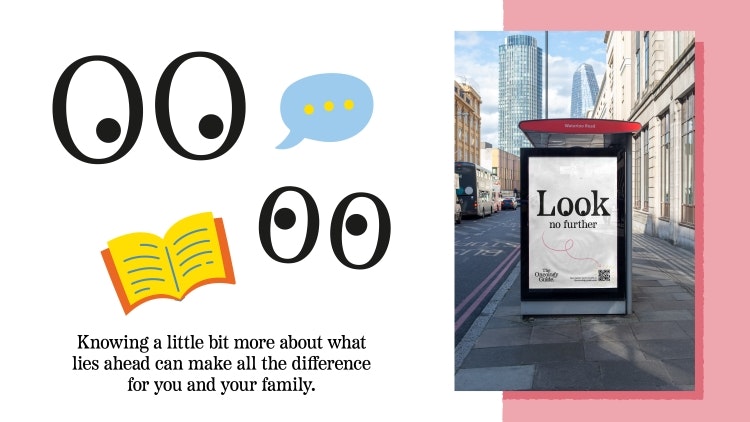Design Bridge and Partners has designed The Oncology Guide – an online resource for families navigating their child’s cancer journey – combining a human approach with a medical journal style.
The studio partnered with the platform’s founder Charley Scott, alongside King’s College Hospital NHS Foundation Trust, Chartwell Cancer Trust, Children’s Cancer and Leukaemia Group (CCLG) for the project.
Scott’s daughter Jess was diagnosed with T-cell non-Hodgkin lymphoma at the age of two and her own personal experience led her to create the guide, which aims to reduce confusion and overwhelm by bringing together patient-focused insight and medically certified information.
Content comprises information around different types of cancer, procedures that children might face and treatments for different types of cancer. It also directs families on how they can get support, whether it be financial or emotional.

Before The Oncology Guide was created, families would only have access to “decentralised information” from various sources, such as individual hospitals and charities, local councils and other services that vary from place to place, according to Design Bridge and Partners leadership creative director Sam Cutler. He says the aim of the guide is to “mediate some of the pain, tension and distress” that families go through by giving them clear and accessible information.
Services like the NHS and the King’s College Hospital website are “bound by so many laws and intricacies about how they present information”, which is why it often appears as lengthy black and white text, says Cutler. The Oncology Guide takes this information and, “without changing it or watering it down”, makes it “more digestible”, he explains.
Subjects on the guide are often presented as an intro, followed by video and then some more longform text. Cutler likens the video content to an episode of Sesame Street, as the child in the video asks a question and the physician answers back.
For The Oncology Guide’s identity, Design Bridge and Partners presented two routes. One was more “future focussed” and related to “contemporary science”, which Cutler says “lacked humanity”, while the chosen design is inspired by “classic medical journals” and scientific posters, but has also been designed to imbue humanity.
The typographic treatment and layout seek to combine a “classic medical look with the handwritten, scribbly nature of a doctor’s note”, says Cutler. Striking a balance between being “visually compelling to a child and reassuring to an adult” was a design challenge, he adds, as the identity had to convey “credibility” while also embodying “warmth and humanity”.
The illustrations are more reminiscent of a doctor’s note, as they often focus in on key terms by circling underlining or highlighting them, as a doctor would, according to Cutler. The sophisticated, bespoke logotype also houses a more playful element.
Cutler notes that, today, kids are growing up in a world where there are a lot of “non-verbal depictions of emotion”, so it was a “lightbulb moment” when the studio thought off incorporating eyes into the logotype. The eyes are also used in isolation across the guide the convey emotion through different animated expressions
As well as the using a classical typeface, called Etna, The Oncology Guide uses a font called Bjorn for larger chunks of text. It was chosen for its digital friendly and “contemporary” qualities which Cutler says will aid parents who might be reading “a lot of information” late at night or in stressful situations.

Yellow is a “big colour” for the cancer category, according to Cutler, which is why its included in the brand alongside other colours like blue, pink and orange. The colours act as “an accent palette” so as to not take away from the “medical authority and credibility” while still providing some contrast to a “sterile hospital environment”, he explains. The tonality of the palette was equally important and Design Bridge and Partners looked for “vibrant but muted” hues, similar to charts and infographics in medical journals, Cutler adds.
Digital studio Arcade Ltd worked with Design Bridge and Partners on the user experience for the guide. Cutler says the aim was to reduce the amount of clicks needed with “simple intuitive navigation”.

- Design disciplines in this article
- Industries in this article







